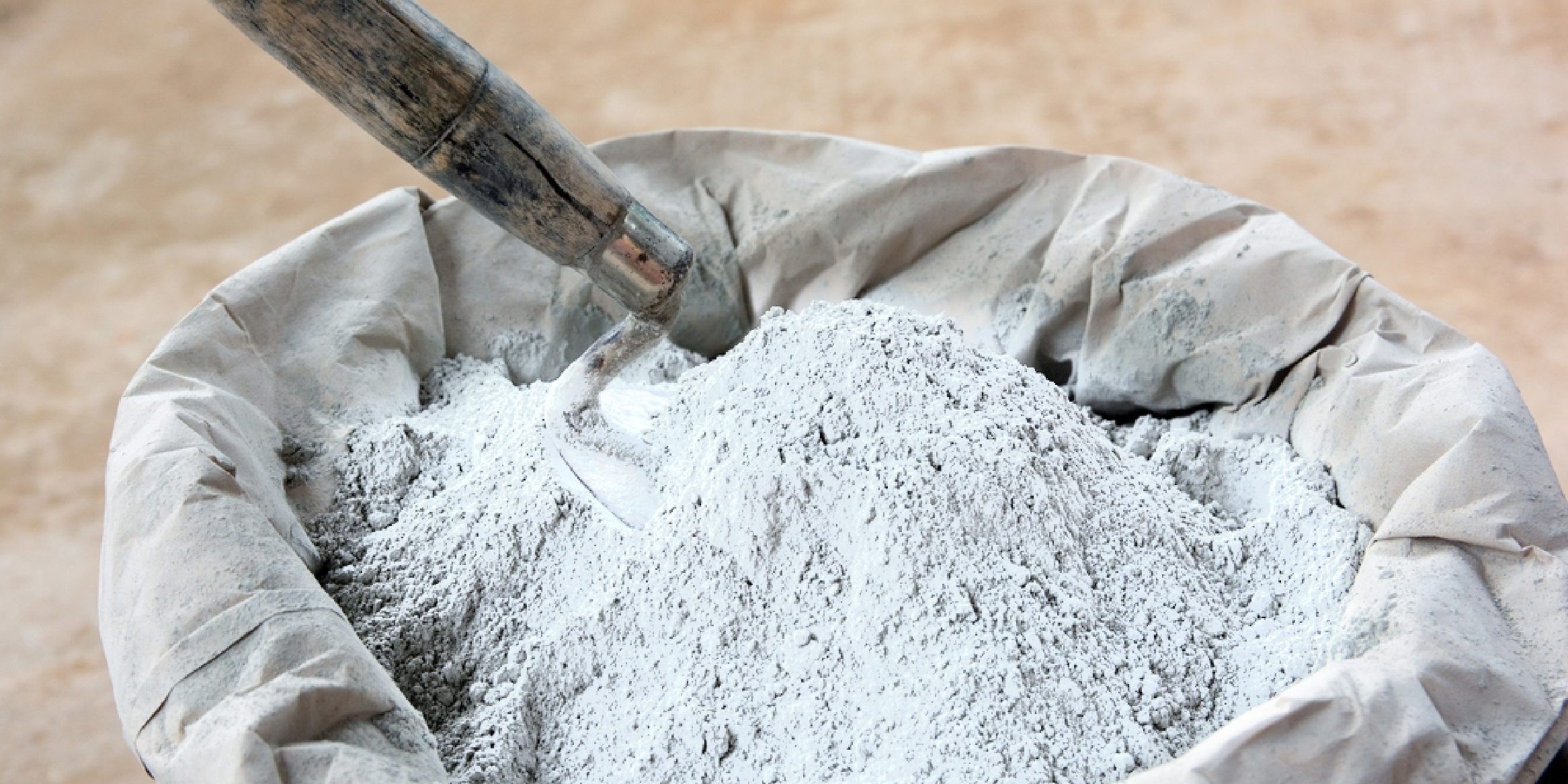White Cement: Composition, Uses, and Application Techniques
April 8, 2024

Introduction
White cement, a specialised variant within the cement family, holds a distinct allure in the realm of construction. Renowned for its pristine hue and versatility, it stands as a beacon of innovation in architectural and artistic endeavours alike. In this blog article, we’ll delve into white cement’s meaning, composition, manufacturing process, uses, and application techniques.
What is White Cement?
White cement is a specialized type of cement known for its distinctive colour and properties. Unlike traditional grey cement, which derives its colour from iron oxide and other impurities, white cement is manufactured to be as white as possible. It is produced from raw materials that are low in iron and other colour-causing compounds, such as limestone, silica, and gypsum. Additionally, white cement may contain supplementary materials like chalk, or marble to enhance its whiteness.
White cement composition
The composition of white cement is meticulously crafted to ensure its unique properties and pristine appearance. Unlike traditional Portland cement, which typically contains iron oxide and other additives that impart a greyish colour, white cement relies on a precise blend of raw materials chosen for their purity and light-reflecting qualities.
1. Limestone
Acts as the primary source of calcium carbonate, a crucial ingredient in cement production. The limestone used in white cement manufacturing undergoes rigorous selection to minimize impurities and maintain the desired whiteness.
2. Kaolin Clay
Also known as china clay, kaolin contributes to the bright white colour of the cement. It serves as a source of alumina and silica, essential components for cement formation while imparting opacity and enhancing the cement’s reflective properties.
3. Silica Sand
Provides additional silica content, aiding in the formation of calcium silicate hydrates during the cement hydration process. This contributes to the strength and durability of white cement while contributing to its bright appearance.
4. Gypsum
Regulates the setting time of the cement and controls its early strength development. In white cement production, gypsum is carefully controlled to avoid any discolouration or interference with the desired white hue.
5. Other Additives
Depending on the specific requirements of the manufacturer, additional additives may be included to fine-tune the properties of the white cement. These may include mineral pigments for colour modification or performance-enhancing agents to improve workability and durability.
The meticulous selection and precise combination of these raw materials ensure that white cement maintains its exceptional clarity, purity, and aesthetic appeal. This composition is fundamental to the versatility and performance of white cement in various construction and decorative applications.
Manufacturing Process of White Cement
The manufacturing process of white cement is a carefully orchestrated series of steps designed to ensure purity, consistency, and the desired aesthetic qualities. While it shares similarities with the production of traditional Portland cement, the manufacturing process of white cement is distinguished by its meticulous attention to detail and the stringent control of raw materials.
Step 1: Raw Material Selection
The manufacturing process begins with the careful selection and procurement of high-quality raw materials. This typically includes limestone, kaolin clay, silica sand, and gypsum, chosen for their purity and light-reflecting properties.
Step 2: Raw Material Preparation
The selected raw materials undergo thorough crushing and grinding to reduce them to a fine powder. This step is essential for achieving uniform particle size and facilitating the subsequent chemical reactions during cement production.
Step 3: Mixing and Blending
The finely ground raw materials are then blended in precise proportions to form a homogenous mixture. The composition of this mixture is critical, as it determines the final properties and appearance of the white cement.
Step 4: Calcination
The blended raw materials are fed into a rotary kiln, where they are subjected to high temperatures exceeding 1450°C. This process, known as calcination, causes chemical reactions that result in the formation of clinker. During calcination, carbon dioxide is driven off, and the raw materials undergo chemical transformations to produce calcium silicates and aluminates, the main components of cement.
Step 5: Clinker Grinding
The clinker produced in the rotary kiln is cooled and finely ground into a powder. This grinding process is essential for achieving the desired fineness and consistency of the white cement.
Step 6: Addition of Gypsum
A small amount of gypsum is added to the clinker during grinding to regulate the setting time of the cement and control its early strength development. The gypsum helps prevent rapid setting and ensures that the cement achieves the desired workability and performance characteristics.
Step 7: Packaging and Quality Control
The final product is rigorously tested for quality and consistency before being packaged and shipped for distribution. Quality control measures include physical and chemical testing to verify the cement’s strength, setting time, fineness, and colour consistency.
By meticulously controlling each stage of the manufacturing process, white cement producers can ensure that the final product meets the highest standards of purity, consistency, and aesthetic appeal. This precision and attention to detail are essential for fulfilling the diverse needs of architects, designers, and builders in various construction and decorative applications.
White Cement Uses
White cement’s versatility extends far beyond conventional construction applications, finding its place in a diverse array of architectural, artistic, and functional uses.
1. Architectural Applications
A. Decorative Concrete
White cement is favoured for creating decorative concrete elements such as countertops, sinks, and facades. Its pristine hue allows for the incorporation of pigments and aggregates, resulting in striking visual effects and intricate designs.
B. Precast Panels
In architectural design, white cement is often utilized for the production of precast concrete panels. These panels offer durability, versatility, and a sleek aesthetic, making them suitable for both interior and exterior cladding applications.
C. Terrazzo Flooring
White cement serves as a key component in the creation of terrazzo flooring, a timeless and elegant choice for commercial and residential spaces. Mixed with marble chips or other aggregates, white cement produces a smooth, durable surface with a luxurious appearance.
B. Artistic Applications
A. Sculptures
Renowned for its purity and workability, white cement is a favoured medium for sculptors seeking to create intricate and expressive sculptures. Its ability to capture fine details and withstand environmental elements makes it an ideal choice for both indoor and outdoor installations.
B. Statues
White cement statues adorn public parks, gardens, and cultural landmarks worldwide, embodying timeless beauty and artistic expression. From classical Greek statues to modern abstract sculptures, white cement’s versatility allows for the creation of enduring works of art.
3. Functional Uses
A. Tile Adhesives
White cement-based tile adhesives offer superior bonding strength and resistance to moisture, making them ideal for installing ceramic, porcelain, and natural stone tiles. Their white colouration ensures minimal colour bleed-through, particularly when installing light-coloured tiles.
B. Waterproofing
White cement-based waterproofing compounds provide effective protection against water infiltration in various construction applications. Applied as coatings or admixtures, these formulations create a durable barrier that safeguards structures from moisture damage and extends their lifespan.
From architectural masterpieces to functional infrastructure, the applications of white cement are as diverse as they are enduring. Its exceptional qualities continue to inspire innovation and elevate the realms of construction, art, and design.
White Cement Setting Time
The drying period for white cement closely mirrors that of standard Portland cement. Typically, the mixture should begin to set within approximately 30 minutes and is expected to be fully set in 8 to 10 hours. When incorporating white cement into concrete, typical drying timelines remain applicable. Therefore, one can anticipate the concrete to dry sufficiently for weight-bearing purposes within 24 to 48 hours. It’s crucial to note that the drying process for concrete, whether white or conventional, continues over time, with maximum strength typically achieved after 28 days.
Is White Cement Waterproof?
Indeed, white cement possesses inherent waterproofing properties, making it an excellent choice for waterproofing applications in various building structures, including basements, bathrooms, water tanks, and swimming pools. When properly applied, white cement can create a robust waterproofing barrier, effectively preventing water penetration. Its low alkali content and fine particle size enable it to form a dense, impermeable layer upon curing. Moreover, white cement exhibits superior resistance to elevated temperatures compared to conventional cement varieties, further enhancing its suitability for diverse construction needs.
How to Use White Cement
1. How to Use White Cement to Fill Gaps
White cement can be an excellent choice for filling gaps and cracks in walls, floors, or other surfaces. Follow these simple steps:
- Start by cleaning the area thoroughly to remove any dust, debris, or loose particles.
- Mix the white cement with water to achieve a smooth paste-like consistency. You can adjust the ratio of water to cement powder to achieve the desired thickness.
- Using a trowel or putty knife, apply the white cement paste into the gaps or cracks, ensuring it fills them completely.
- Smooth out the surface of the filled area with the trowel or putty knife, removing any excess cement.
- Allow the white cement to dry completely before sanding or painting, if necessary.
2. How to Apply White Cement on Walls
Applying white cement on walls can give them a fresh, clean look while providing a durable and long-lasting finish. Here’s how to do it:
- Prepare the wall surface by cleaning it thoroughly and ensuring it’s free of dust, grease, or other contaminants.
- Mix the white cement with water according to the manufacturer’s instructions, until you achieve a workable consistency.
- Using a trowel or a masonry brush, apply the white cement evenly onto the wall surface, working in small sections at a time.
- Spread the cement evenly, making sure to fill any gaps or imperfections in the wall.
- Allow the first coat to dry completely before applying additional coats if necessary. You can sand the surface lightly between coats for a smoother finish.
- Once the final coat is dry, you can paint the wall if desired or leave it as is for a bright, white finish.
3. How to Use White Cement for Waterproofing
White cement can also be used effectively for waterproofing various surfaces, such as roofs, balconies, or bathroom walls. Here’s how to do it:
- Prepare the surface by cleaning it thoroughly and repairing any cracks or damaged areas.
- Mix the white cement with a waterproofing additive according to the manufacturer’s instructions, ensuring thorough mixing to achieve a homogenous blend.
- Apply the white cement mixture onto the surface using a brush, roller, or sprayer, making sure to cover the entire area evenly.
- Pay special attention to seams, joints, and areas prone to water leakage, ensuring thorough coverage.
- Allow the waterproofing layer to dry completely before subjecting it to water exposure. Depending on the conditions, this may take several hours to a few days.
Conclusion
In conclusion, white cement emerges as a versatile and reliable solution for a wide range of construction and design needs. Its pristine appearance, durability, and adaptability make it a valuable asset in architectural, artistic, and functional projects alike. By leveraging its unique properties and exploring innovative applications, we can unlock endless possibilities for creativity and longevity in the built environment. As we look to the future, white cement holds immense potential for further advancements and contributions to sustainable and aesthetically pleasing construction practices.


